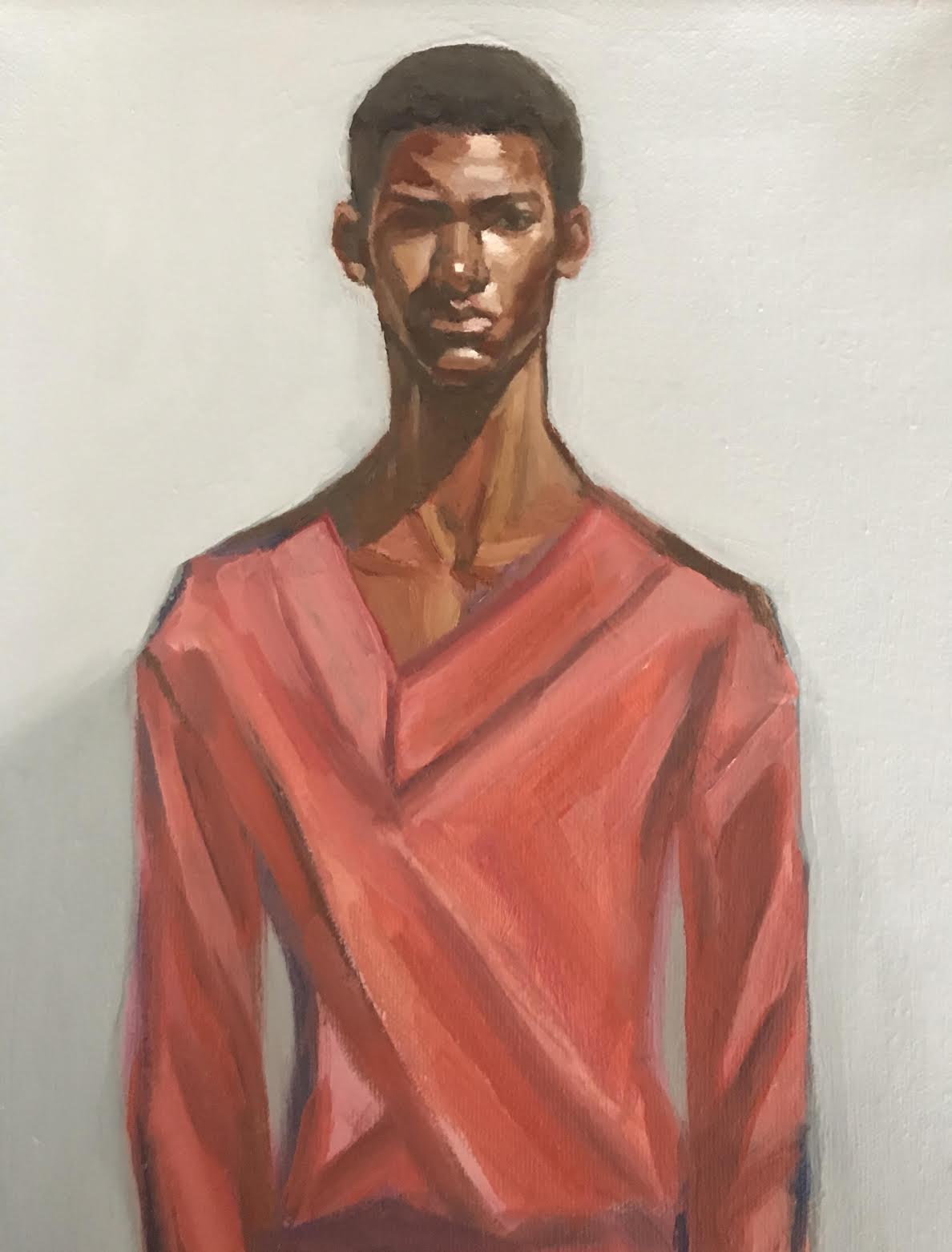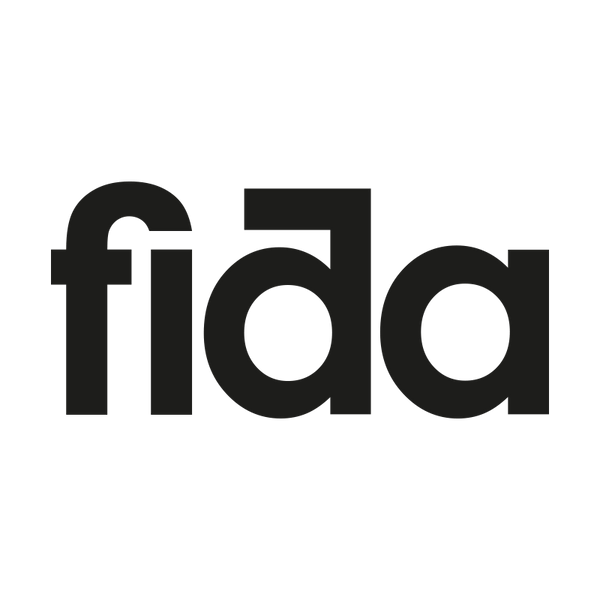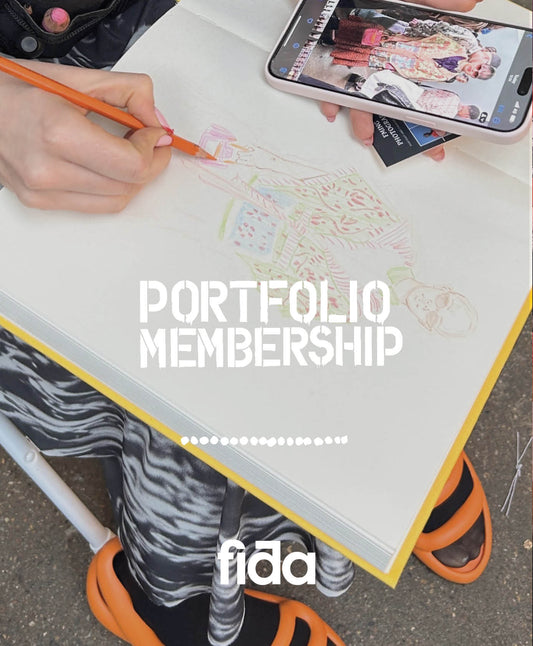Michael Choi speak of Sargent, Freud and Alice Neal with a hint of Haines
Interview with Patrick Morgan RCA

PM : I found you via a fellow judge Massimo Nicosia from Zegna, who forwarded your account to us and it proves that good work will spread and be shared. Can you explain this journey and the thoughts behind this new way of developing a fashion collection?
MC: Yes, Instagram has been a fantastic way to connect with artists and designers globally who have common interests. My initial interests have always been in fine arts and fashion but graduating from Parsons immediately put me in the fashion industry for over 15 years with less focus on the former. After seeing my portfolio sketches, Alber Elbaz hired me during the last week of senior year and afterwards I was at Donna Karan helping out the women's knit department for a couple of collections when runway was still part of the business model. Back then all of the New York collections wanted people who can hand draw but as I moved on to transition to more commercial menswear labels such as CK Jeans, it all became more about product development and computer skills.
I ended up being the design director for one of the billion dollar American companies for several years

I ended up being the design director for one of the billion dollar American companies for several years until the last recession hit and actually had not been doing a lot of figurative work for some time. Once on my own I started up a local streetwear capsule label back in 2015 with limited success because of funding and that experience made me realise that all the money spent on sample development, photo shoots and getting the product out visually could be handled by doing some sort impactful imagery by hand. This was just a little over a year ago and the process has been evolving ever since.
"I wanted to be able work remotely with clients but I soon found out my hand in it was more painterly. This then had me go into the direction of picking up a brush again and I paint every day now to some extent."
PM : I see you tried out the i-pad first and moved to oil paint. Messer, but really beautiful. Fashion designers are really starting to use all modes of image making to represent their collection. What are you seeing around at the moment and are you playing with anything else?
MC : Thank you for the compliment. Perfectionism always has me seeing the flaws so having someone else appreciate the work is always encouraging. I think fashion illustrators are using the medium more as far as digital goes but not many designers actually utilise the iPad for work on a day-to-day basis. Right now I am a guest designer critic at Parsons for Juniors and Seniors each semester and the students are only starting to learn the digital drawing aspect of it. For the most part, the iPad is still new for the industry as far as RTW is concerned and the current times might make it more of an essential tool in the future if working off site becomes more standard. My interest in digital art started because I wanted to be able work remotely with clients but I soon found out my hand in it was more painterly. This then had me go into the direction of picking up a brush again and I paint every day now to some extent.

PM : The current fashion industry is constantly looking at how to diversify their collections, I noticed most of your models are black? Also you are designing menswear, we are seeing a real push in menswear, do you think we can be more creative and disruptive here than womenswear?
"My thought on the matter outside of hiring practices is to start at the design inception and to always keep the conversation going throughout the process. "
MC : My observation is that the editorial and runway world has really embraced using black models in general but my experience in the industry made it apparent that this was really a selling tool and not how most design teams think. You can see this nuance with all the diversity issues as of late with Prada, Gucci and other major fashion studios. A majority of fashion houses project an image of diversity as PR but do not hire internally this way. My thought on the matter outside of hiring practices is to start at the design inception and to always keep the conversation going throughout the process.

PM : Has drawing and painting helped or changed your fashion design practice and using an old technique, made you look at the world differently?
"Oil painting does not have to be perfect at first and you can make changes easily the next day. It is okay to not be precise initially with this traditional medium which has actually helped me explore construction in a creative sense."
MC: We are taught in school to use gouache as a way to present work but I find that this only is useful at the end of the development cycle since it has to be done with precision and with no room for edits. That is why a lot of fashion illustrators use gouache, markers or watercolour since they are drawing a fixed image. Oil painting does not have to be perfect at first and you can make changes easily the next day. It is okay to not be precise initially with this traditional medium which has actually helped me explore construction in a creative sense. Almost like draping with a paint brush since a detail that is not working out at the moment can be designed a different way a few hours later without having to start all over again. To me the clothing also feels more substantial and there is a better sense of the end product with this traditional form of painting.

"One of my mentors in life was Richard Haines who I worked for quite some time ago and he really has now become the Instagram founder of menswear illustration. We would go on research trips to Europe and Richard would be drawing the crowd at the trade shows and even on whatever paper he could find when we went out to have dinner in Milan, London or Paris."
PM - What artists inspired this new mode of painting and who's inspiring you visually to?
MC: When I was much younger, Sargent was a favourite since he worked with realism but incorporated loose, more abstract brush strokes. More contemporary artists include Barkley Hendricks, Alice Neal and Lucien Freud. One of my mentors in life was Richard Haines who I worked for quite some time ago and he really has now become the Instagram founder of menswear illustration. We would go on research trips to Europe and Richard would be drawing the crowd at the trade shows and even on whatever paper he could find when we went out to have dinner in Milan, London or Paris. I never had that dedication back then because I was busy learning other things about the industry but now see it as an inspiration as far as daily motivation goes.

PM - You're quite new to instagram and you have only posted more recently? how have you found this way to express your creativity?
MC: The personal account has been up for just a year and a couple of months or so and it was something that started out as a way to keep in touch with some of my industry connections. I actually have been using instagram for other separate businesses in the past but was too busy until the end of 2018 to have anything personal posted. IG has sort of put me on a regular schedule on being creative and has me thinking constantly of what to do next. In a corporate environment the daily structure is built in but for those working independently, consistency is often a struggle. With that said, Instagram has really kept me focused and has been a tremendous impetus for work output.
PM - You instagram account shows a real mix of image selection from architecture, graffiti, sculpture to fashion shows, like a designer building a mood board. Have you thought about a painted diary of your images rather than just photography?
"Photography is such an immediate form of conveying an image but what I enjoy about oil painting is that you can take some time to get it finished."
MC: Fine arts, architecture, fashion design and pop culture have always been a great inspiration to me and having a camera phone makes it easy to capture any of these moments. Photography is such an immediate form of conveying an image but what I enjoy about oil painting is that you can take some time to get it finished. Right now, part of the learning curve is technique and getting quicker at the process so eventually going beyond figurative work is definitely a goal.
PM - Where next in this new journey and anything you can share?
MC: The funny thing with IG is that everything is so apparent and out in the forefront while I come from the background that prefers things to be under wraps until the day of the presentation. So that part of it will still be a little mysterious for now but you will definitely be the first to get an invite.

PM - Thanks for this interview and I'm looking forward to hearing back from you.
MC: Thank you also for putting a focus on some of the new emerging talent in the field. Really looking forward to seeing the all of the other FIDA connections in the future.
follow : @michaelchoinyc
Be the first to know about new collections and exclusive offers.
Subscribe to our emails
Fida Membership Program
-
 Sale
SaleProject Membership
Regular price From £395.00 GBPRegular priceUnit price / per£495.00 GBPSale price From £395.00 GBPSale -
Student Project Membership
Regular price From £99.00 GBPRegular priceUnit price / per£295.00 GBPSale price From £99.00 GBPSale -
Portfolio Membership
Regular price From £95.00 GBPRegular priceUnit price / per -
Student Portfolio Membership
Regular price From £75.00 GBPRegular priceUnit price / per£95.00 GBPSale price From £75.00 GBPSale


